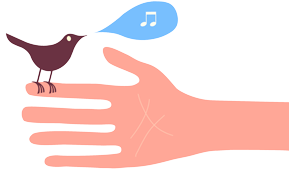
At this moment in time, people increasingly are turning to Artificial Intelligence (AI) services like ChatGPT to get support. So the question of the day is: why therapy?
There are good reasons to use AI instead of therapy. AI can be extremely helpful for some people. It is free to access. AI requires less effort than therapy. AI is significantly more convenient than therapy and can be used whenever you want. It is way easier to talk to AI than it is to find a therapist. AI requires less vulnerability than therapy.
Here’s a radical statement: if using ChatGPT or another AI provides you with all the help you need, use it and don’t bother with therapy. In order for therapy to be worth your time and money, it must provide something that AI does not.
So what does therapy provide that you can’t get from AI?
Psychotherapy is essentially the connection of humans with other humans. It is the process of being witnessed and understood by another person who is totally focused on you during the time you are together. It is about feeling less alone with your struggles. Therapy focuses on your thoughts and your emotions and your bodily experience. It is about human relationship, and it can be rewarding and messy like any other relationship. Therapy is creative and adapts to your needs as you go along. It is a laboratory in which to experiment with different ways of connecting. Therapy is the art of human connection, and human connection is healing.
Here’s the tricky part: “human connection” isn’t the main reason most people start coming to therapy, even though human connection is the foundation of how therapy actually helps. Most people seek out therapy because they have problems and they want solutions. Therapy is not the only way to get solutions to your problems. It’s not the fastest way, it’s not the cheapest way, it’s not the easiest way, and it’s not the way that feels safest all the time.
But, unlike ChatGPT, therapy is the human way.
- In a time when many of our relationships take place asynchronously, therapy is live.
- In a time when many people’s humanity and liberty is being questioned, therapy is humanizing and liberating.
- In a time when we blame ourselves for not being good enough, therapy is a human caring about us no matter what.
- In a time of disconnection, therapy is connecting.
- In a time when we are often in our heads or on social media, therapy is an embodied experience.
- In a time of pain, therapy is healing.
- In a time of short attention spans, therapy is deep and asks us to focus on what is most important for longer than a video clip.
- In a time of “one size fits all” solutions, therapy is creative and individualized for you.
- In a time when people are being oppressed and victimized because of their race or national origin or religion or identity of any kind, therapy is integrating an understanding of social justice into the work of healing.
(Ethically, there are all kinds of worrisome things about AI and its impact on the planet. Although that’s not what I’m focusing on here, it needs to be part of our calculation about how to meet our needs too.)
There are many different kinds of psychotherapy. Not every kind of therapy and not every therapist is providing the kind of human connection I think is important. The medicalization of our field and pressure from health insurance companies have led therapists down a path of trying to find quick fixes that are “cost-effective” and replicable and standardized. Many therapists feel pressure to get trained in different therapy modalities which promise new and improved and faster ways of helping clients.
And, beyond those challenges, therapy is simply inaccessible to many people. It requires money and time that many people do not have. It requires effort to find a therapist who is a good match. There is no centralized system for connecting therapists and clients, so many good therapists can’t find enough clients and many clients can’t find the kind of therapists they want. People with disabilities often do not get the accommodations they need to make therapy accessible for them. These are serious problems in the field of psychotherapy that we need to address. It is understandable that people frustrated with these obstacles would seek help from AI instead of from a human therapist.
Even so, it is important that we not fool ourselves into thinking that help from AI is the same as therapy. AI is like a bag of strawberry-flavored lollipops when you are craving strawberries. There’s nothing wrong with lollipops. If you want a lollipop, have a lollipop! If that satisfies you, fabulous.
But remember that human therapists are here for you. If you are craving strawberries, I want you to have strawberries. If you are truly in need of human connection in order to heal and grow, don’t settle for the lollipops.
